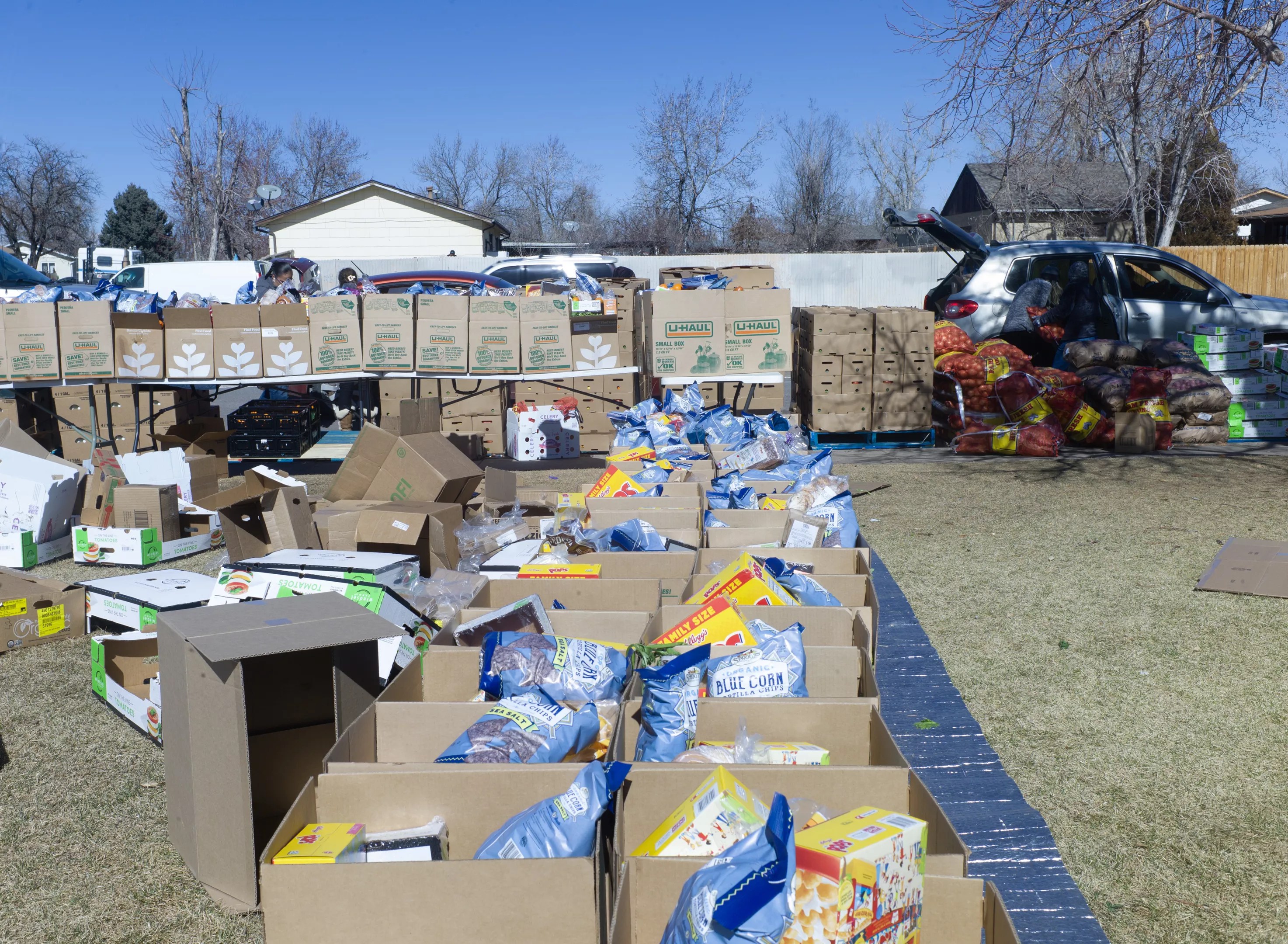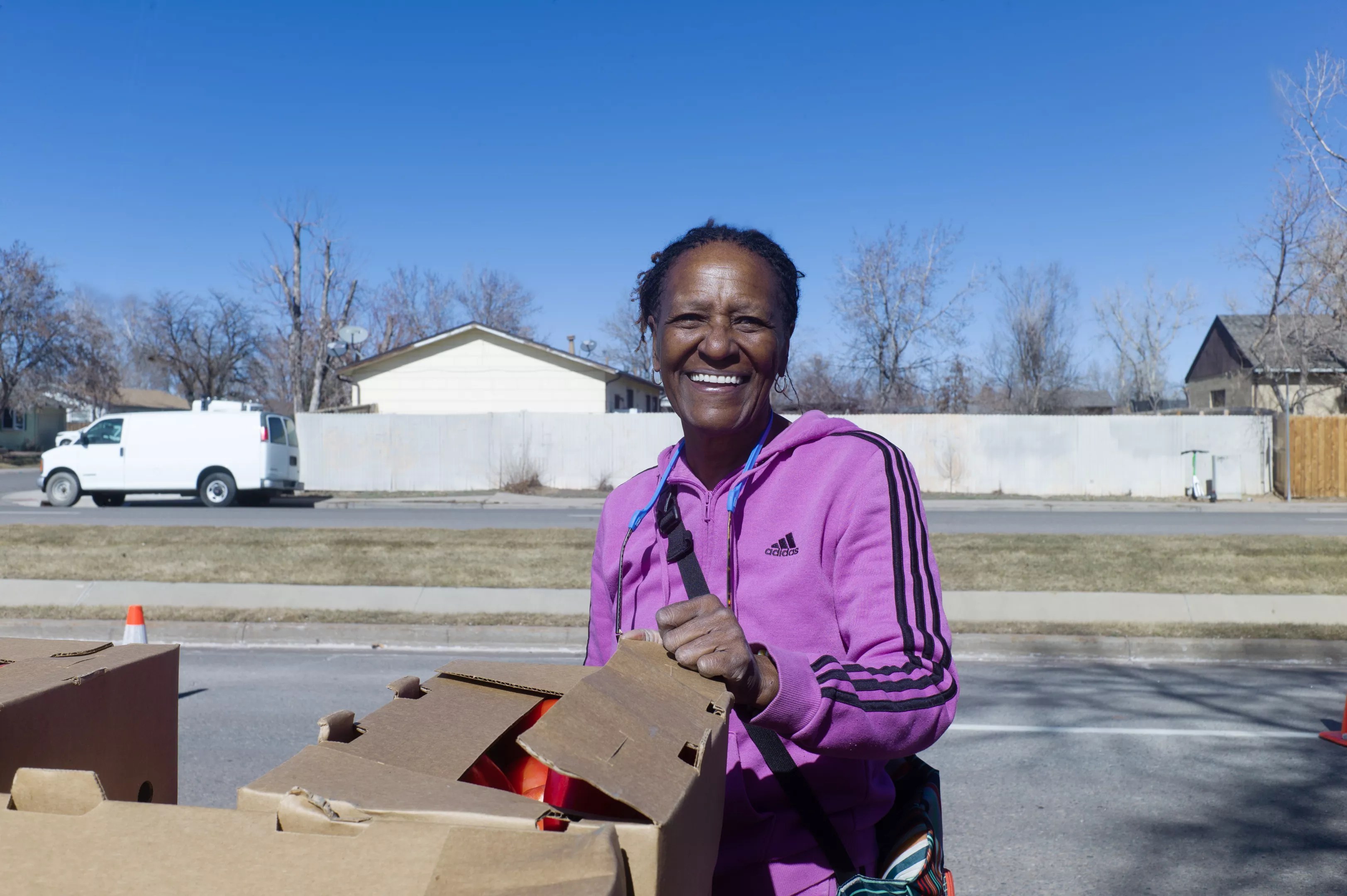
Bob Wooley

Audio By Carbonatix
“Shit’s gonna hit the fan.”
That’s the prediction from Thai Nguyen, who runs Kaizen Food Rescue, about the dramatic SNAP (Supplemental Nutrition Assistance Program) cutbacks in benefits that recipients will experience starting this month, even as inflation continues to strain grocery budgets and some food pantries, like hers, are forced to cut back service.
When pandemic shutdowns came, they brought with them more demand for food assistance across the board. Food banks, pantries and food share organizations like Kaizen – which serves primarily immigrant, refugee and BIPOC communities across the metro area – saw a marked increase in need among community members they served.
In response, in 2020 the federal government increased SNAP benefits, aka food stamps, for people who relied on the program to make ends meet. The increased benefits came in the form of a temporary emergency allotment program passed by Congress.
Those emergency allotments were significant, not just because they increased the monthly benefit per household, but because they automatically allowed each household to qualify for the maximum benefit for a particular household size – something that previously had been determined by the amount of money earned. As a result, benefits increased by roughly $90 per family member per month.
For seventeen states, the emergency allotments ended months ago, and South Carolina’s ended in January. But for the remaining 32 states, including Colorado, February 28, 2023, marked the end of the program.
But the pandemic is over and unemployment is low, so it doesn’t matter, right?
Not so fast.
Nguyen thinks this benefits cliff is the final component for a real-life hunger game – and it’s going to be a rough couple of years for everyone involved.
In a February 28 interview with KOA, Karla Maraccini, division director of food and energy assistance at the Colorado Department of Human Services, talked about the end of SNAP emergency allotments and how the state is hoping to mitigate damage from what, according to her numbers, will be a $55 million-per-month blow to the state’s SNAP recipients, affecting more than 289,000 households and upwards of 554,000 individuals each month in Colorado alone.
That drop could be partially mitigated by an emergency grant that would funnel funds from the state American Rescue Plan Act into food programs. But first, the emergency grant must be approved, which Maraccini said is in the works.
“The Colorado Legislature moved forward a bill that the governor is expected to sign that will add about $14 million to hunger relief efforts in Colorado – so, primarily food banks and food pantries – in the coming weeks,” she noted.
Maraccini said the state will be looking into data from the past few years to get a better understanding of how many people had higher housing stability, better health outcomes and kids who performed better in school because they weren’t hungry all the time, as conclusions drawn from that data could potentially be used for future justification to increase SNAP benefits in Colorado.
But the remaining $39 million deficit will put an increasing amount of strain on the already struggling pantry and food bank network across the state.
For her part, Nguyen has serious questions about how assistance money will be spent moving forward. She says a big concern is that efforts to get food to communities in need as quickly as possible is likely to take the form of a few large food banks receiving the lion’s share – about $12 million of the $14 million in state money.
Those food banks, she fears, will use the funds to purchase bulk quantities of cheaper, less nutritious and culturally insensitive foods instead of being truly community-led and culturally responsible. At the same time, she worries that the attempt to buy more food for less money will mean cutting local farmers and producers out of the equation completely. Nguyen assumes that the remaining $2 million would likely be split among the state’s food pantries, which she calculates to be about $2,000 or less per pantry.
It’s simply not going to be enough, she adds.
“We need to look at everything, including environmental factors,” Nguyen says. “Are we truly trying to support our local economy, our local farmers? People always say, ‘We need to support farmers,’ but when I look at some organizations’ purchasing policies, they really don’t reflect those values.”
“SNAP cuts are already increasing the need for food assistance across Colorado (among many other states),” responds Erin Pulling, president and CEO of Food Bank of the Rockies. “While we will see some alleviation via the $14 million state award for food banks and food pantries, that funding represents just 2 percent of the SNAP decrease, making it more important than ever for people to donate to their local food banks or food pantries.
“Fresh produce and culturally responsive food comprise more than half of the food that Food Bank of the Rockies purchases, and roughly one-third of our fresh produce is sourced in Colorado – priorities which we will maintain with new state funding,” she continues. “Additionally, we are excited to launch a community-driven process to inform the best use of state funding, turning to our 600+ Hunger Relief Partners in Colorado to have a voice in how Food Bank of the Rockies can most effectively leverage its massive purchasing power to meet local community needs. And Food Bank of the Rockies is committed to building this community-led process, as well as providing its sourcing and distribution services, with separately fundraised dollars so that all state funding received is used for food purchasing rather than overhead.”
Still, Kaizen is already feeling the effects of sustained need during a time of inflation.
“We’ve actually had to reduce our food shares. We’ve gone from sixteen to six food shares per month,” Nguyen says. “We’ve actually had people waiting in line, and we’ve had to just give them information to call Hunger Free Colorado and Food Bank of the Rockies to search for other local food pantries.”
She says that Kaizen’s ability to procure fresh food options also has been more limited lately, making it tougher to put together food share boxes that contain enough ingredients for recipients to make a nutritious meal. But when they are able to, the gratitude is always overwhelming.
“Whenever they see us provide eggs for folks, they get so excited. They get really teary-eyed when they see eggs,” she says.

Pamela Jiner has been volunteering to help feed the hungry by working at the Falcon Park food share in Montbello for the past six years.
Bob Wooley
On a recent Monday, a line of cars waiting for the weekly Kaizen food share at Falcon Park in Montbello stretched for nearly eight blocks. Potatoes, onions, fresh vegetables, boxes of cereal and cartons of the much-coveted eggs were loaded into cars as they reached the front of the line.
“Do you have kids, Mami? She’s got kids – make sure she gets extra cereal,” says Pamela Jiner, a volunteer with Kaizen.
Jiner is all about the kids. Working the distribution line on this blustery February day, she is all smiles, offering a stream of friendly banter. It’s obvious that the six years she’s spent at this food share haven’t lessened her compassion for those she helps.
“When I see kids, I throw in extra stuff,” Jiner says. “Here you go, Mama. Give her two milks, two eggs.”
The spiraling cost of milk, eggs and butter, she adds, have kept the lines at this food share long, regardless of the so-called return to “normal” post-COVID.
Across town, The Action Center, a Lakewood-based Jeffco nonprofit, is also seeing an increase in traffic over the past few months.
Laurie Walowitz, director of programs there, says the number of new (or recently new) people visiting the food pantry after the pandemic started was between 13 and 25 percent per month. But for the past few months, it’s been consistently at 25 percent, and she thinks it will continue to trend up.
“In December, we transitioned back to a self-select, indoor distribution system instead of the pre-packed, outdoor method we used during the pandemic,” she says. “I’ve seen the numbers for the self-select. They’re going up. We have a cap on how many we can serve per day. We’re limited by space, hours and our food dollars. But I worry about us having the financial resources to keep up the pace, because we’re all struggling for financial resources.”
Jen O’Neal, senior community food systems manager for Hunger Free Colorado, says need is still strong across the board, with an increase in new, unique households visiting the food pantries she works with. This February saw increases in demand for food of between 15 and 30 percent compared to last February.
“There are more people who are coming right now than there were this time last year, and that was before the benefits cliff. So we’re expecting that [demand] to spike, and we’re expecting to see March 2020 levels of demand,” she says. “Our pantries and our emergency food service providers are being hit by this double impact of the demand being at record highs – or increasing – and the cost of food being higher.”
Those higher food costs affect not only donations to pantries, but also the price that pantries and food banks pay for the food they purchase, she adds.
In addition to the possible $14 million emergency assistance grant, O’Neal says Hunger Free Colorado is advocating hard for the Food Pantry Assistance Grant (SB23-027) introduced by state Senator Lisa Cutter in January. O’Neal says the bill is not just a way to get money to food pantries, but is also dedicated to local purchasing – making sure organizations like hers are able to work with the state’s small and mid-sized farmers to get local, fresh food to the communities that need it most.